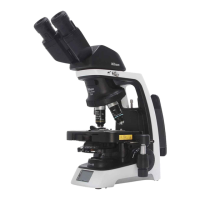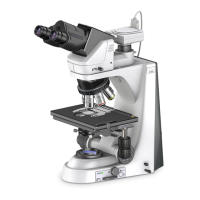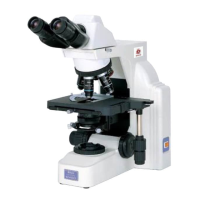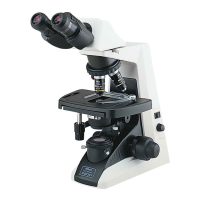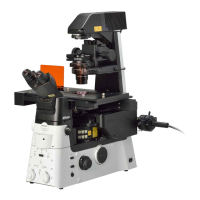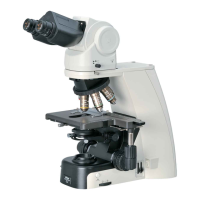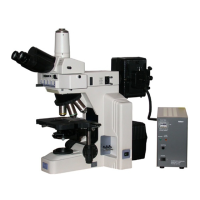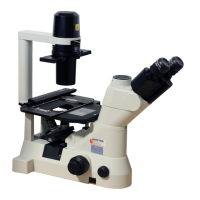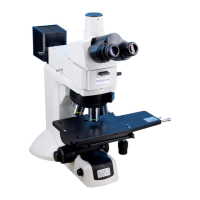Chapter 3 Individual Operations
127
Individual
Operations
16.6
Changing the Waveform Characteristics of the Excitation Light (D-FB Excitation Balancer)
By attaching the D-FB Excitation Balancer to the
epi-fluorescence attachment, the waveform characteristics of
the excitation light can be changed arbitrarily. The balancer is to
be used together with a dual-band filter cube.
■ Attaching and using the excitation balancer
(1) Turn off the power for the epi-fluorescence light source.
(2) Remove the aperture diaphragm unit from the
epi-fluorescence attachment.
(3) Insert the D-FB Excitation Balancer into the rear of the
aperture diaphragm unit, as shown in the figure. Be
careful not to touch the glass surface of the excitation
balancer.
(4) Attach the aperture diaphragm unit back onto the
epi-fluorescence attachment.
(5) Attach a dual-band filter cube onto the
epi-fluorescence attachment.
(6) Adjust the excitation balancer horizontally to attain the
desired excitation light.
Attaching the excitation balancer
■ Excitation balancer details
The excitation balancer is configured to achieve almost 100% transmittance at all times for FITC, which generally has
low fluorescence.
Position of
optical path
DAPI FITC TRITC/Texas-Red
(1) 100% 100% 0%
Between (1) and (2) Variable (100 to 50%) 100% Variable (0 to 50%)
(2) 50% 100% 50%
Between (2) and (3) Variable (50 to 0%) 100% Variable (50 to 100%)
(3) 0% 100% 100%
perture diaphragm unit
Excitation balancer
A
B
: Effective diameter on the aperture
diaphragm surface
A
B
(1)
(2) (3)
DAPI
FITC
TRITC
Texas-Red
A
A
B
B
100%
50%
0%
350 400 450 500 550 600 650 700
Transmittance
Wavelength
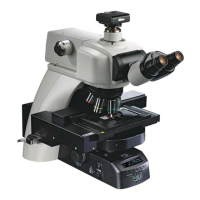
